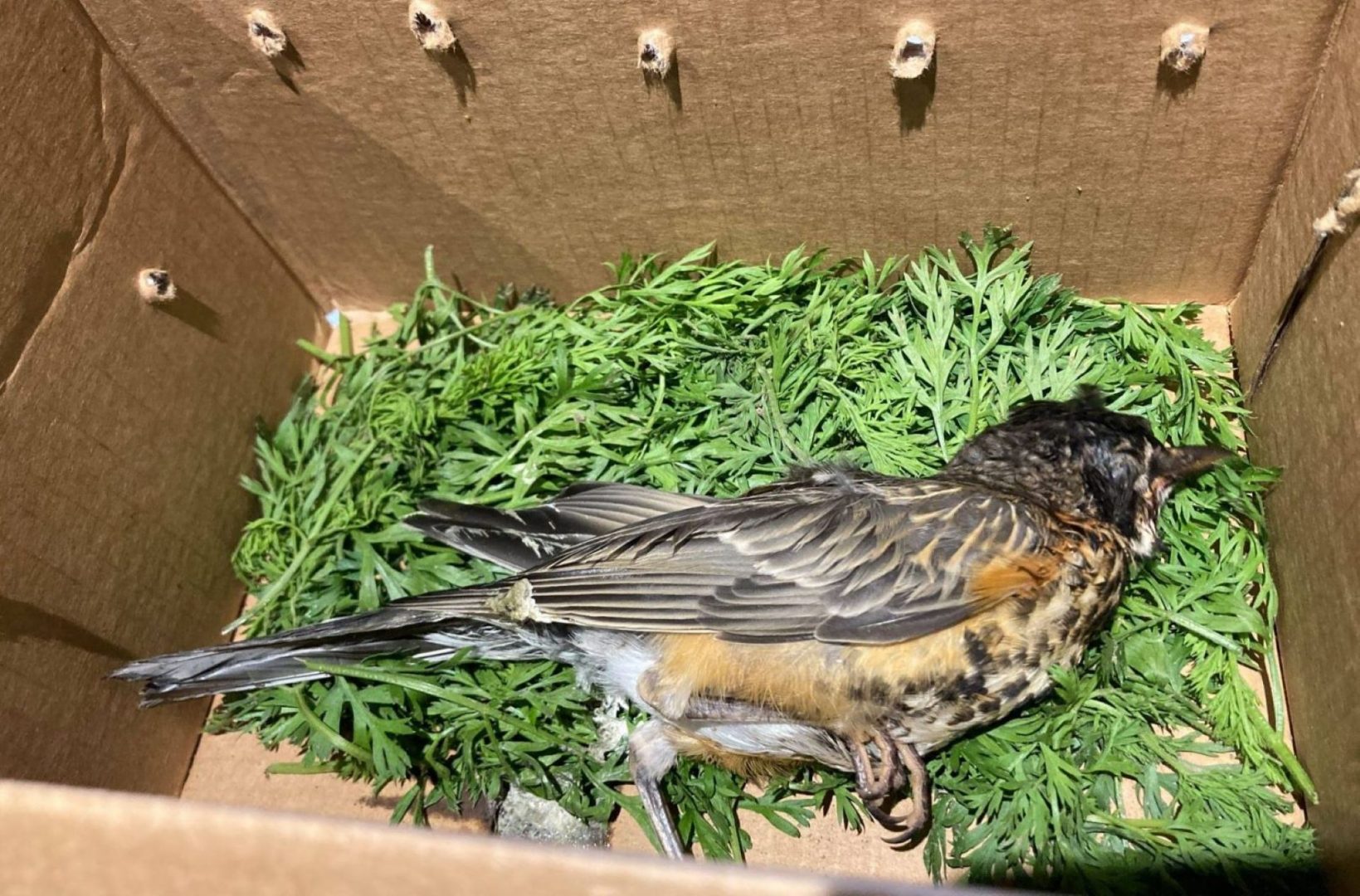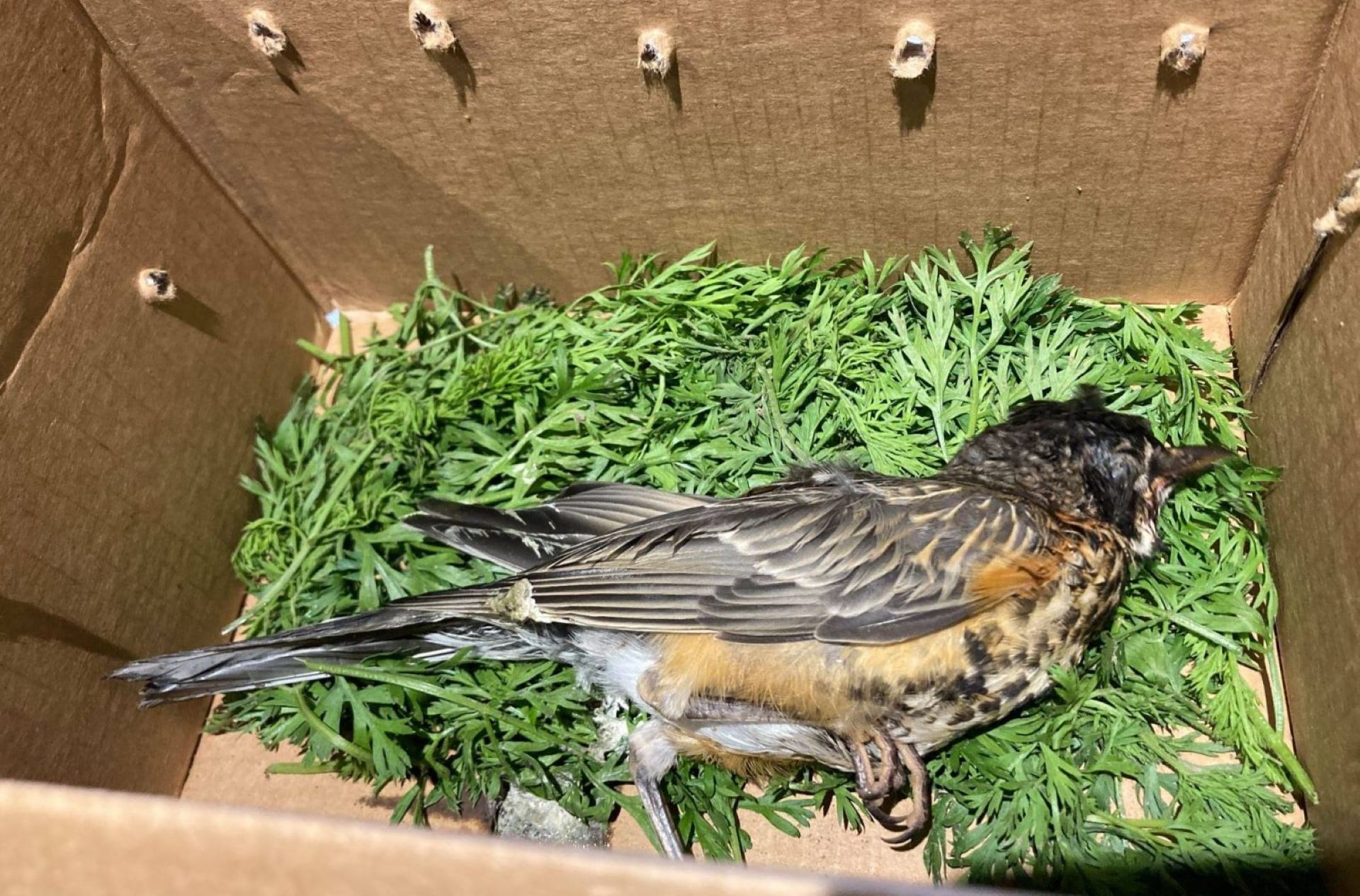
This fledgling American Robin, found in Erie County, had crusty eyes, twitched his head and was unable to stand.
Courtesy of Tamarack Wildlife Center.

This fledgling American Robin, found in Erie County, had crusty eyes, twitched his head and was unable to stand.
Courtesy of Tamarack Wildlife Center.

Courtesy of Tamarack Wildlife Center.
This fledgling American Robin, found in Erie County, had crusty eyes, twitched his head and was unable to stand.

Courtesy of Tamarack Wildlife Center.
This fledgling American Robin, found in Erie County, had crusty eyes, twitched his head and was unable to stand.
The reports started in late May: Songbirds in Washington, D.C. and neighboring regions were being found dead, often with swollen and crusty eyes. In the days that followed, similar sightings came from many states, including Kentucky, Virginia, Pennsylvania, and New Jersey.
Now, the symptoms have been seen as far west as Indiana — but wildlife experts still aren’t sure what’s causing the deaths.
“I don’t want to particularly say that it’s spreading because we don’t know whether it’s contagious or not,” said Allisyn Gillet, state ornithologist for the State of Indiana. She told Science Friday that word of the illness has spread to many backyard birders.
“People are becoming more informed,” she said. “Maybe it has been in another environment for some time before we really detected it and knew about it.”
Lisa Murphy, a wildlife toxicologist at the University of Pennsylvania, is part of a team that’s been testing dead birds. She told Science Friday that they’re using new data to narrow down the possibilities.
“Is it just an eye problem or as we start to look at it more closely, maybe it emerges as a respiratory problem or a liver problem and we start to build lists and as we get more information, we can start to refine that list,” Murphy said.
The illness has affected many species, including American robins, blue jays, common grackles, and European starlings. So far, investigators have found no signs of salmonella and chlamydia; avian influenza virus; West Nile virus and other flaviviruses; Newcastle disease virus and other paramyxoviruses; herpesviruses and poxviruses; or Trichomonas parasites. But unfortunately, their tests have been inconclusive as to the actual cause.
“It’s one thing to have that goal of finding out what it is,” said Lisa Murphy. “But now it’s it’s what do we do next to either try to stop it, at least mitigate it, hopefully to prevent it happening next time?”
Experts are asking people in the affected areas to be on the lookout for birds with crusty eyes or behaving strangely—and report them to the University of Pennsylvania Wildlife Futures Program.
In an effort at avian social distancing, they’re also suggesting removing bird feeders until the cause of the ‘mortality event’ is known.
You can hear the full interview on Science Friday.
The days of journalism’s one-way street of simply producing stories for the public have long been over. Now, it’s time to find better ways to interact with you and ensure we meet your high standards of what a credible media organization should be.